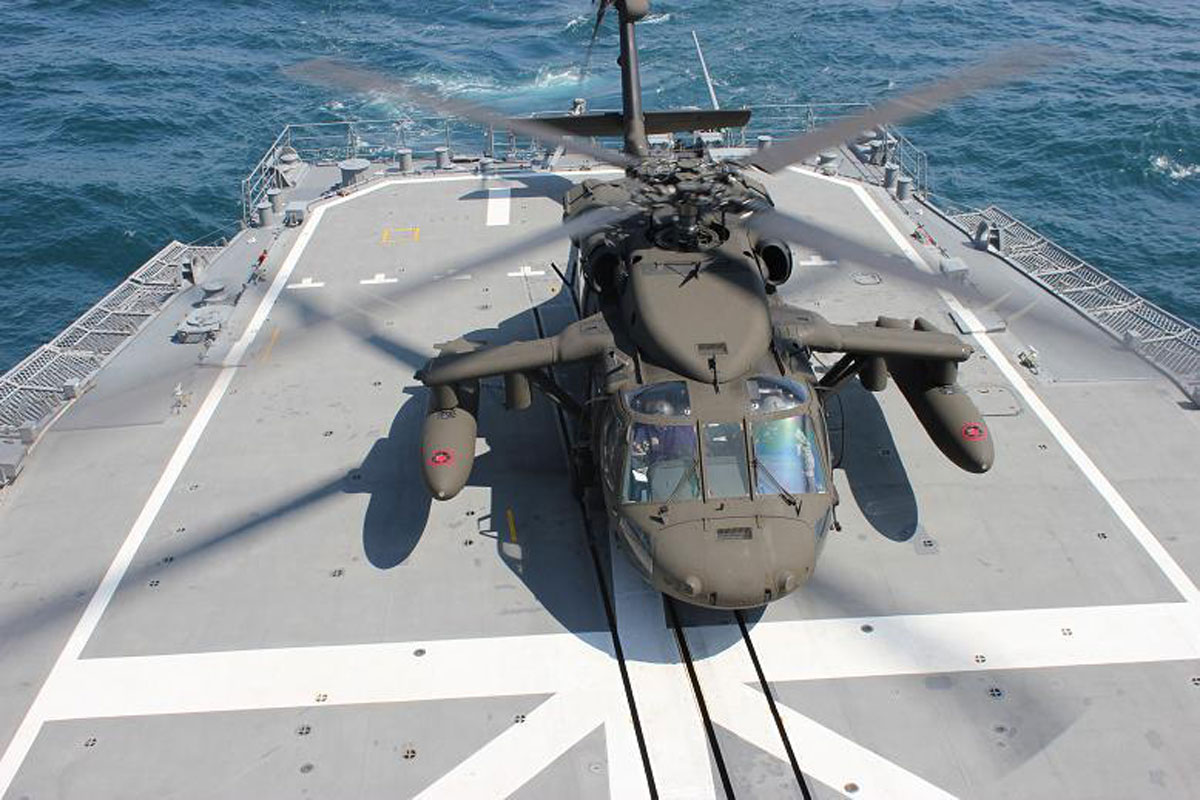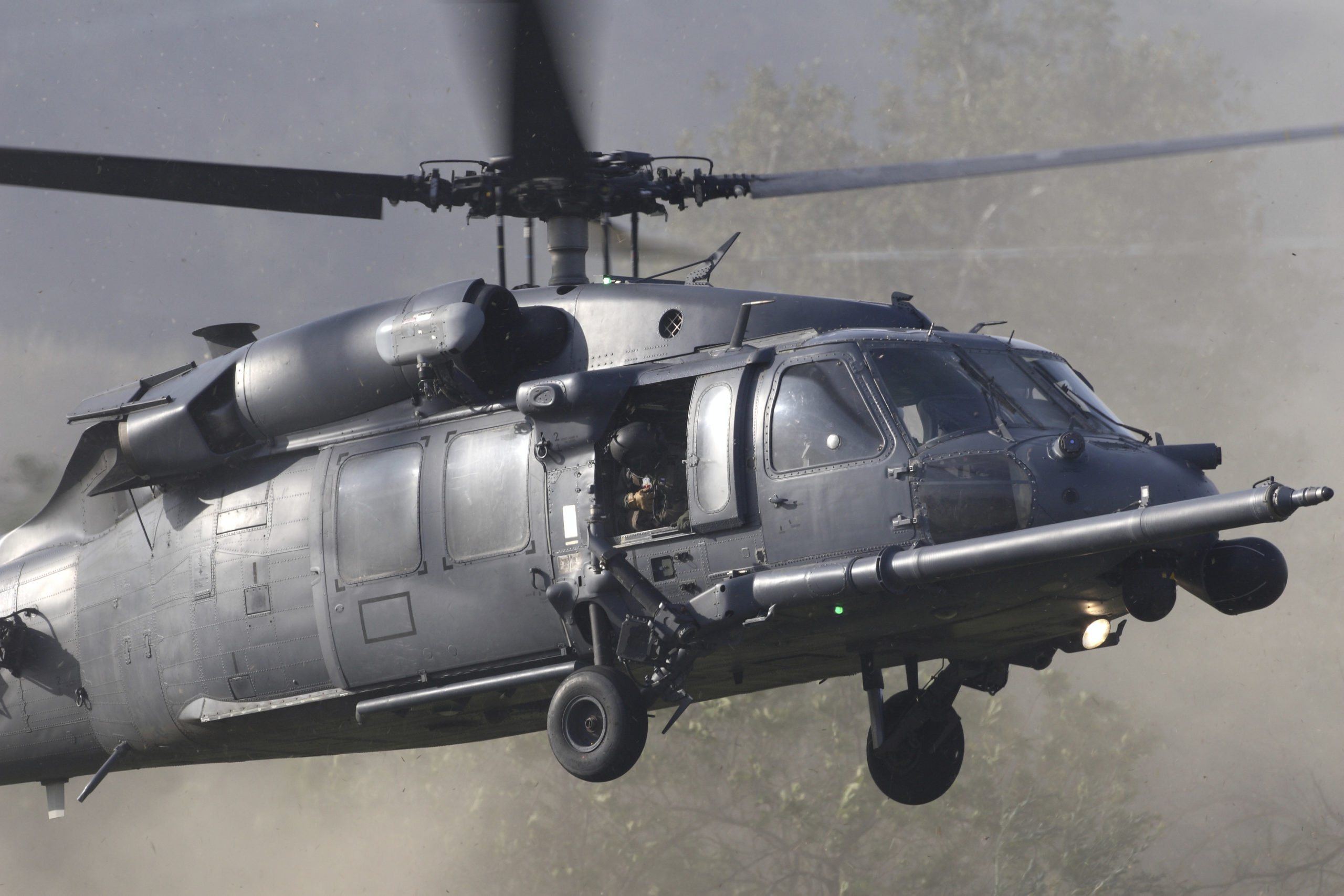UH 60 Black Hawk: How This Iconic Helicopter Supports Tactical and Combat Missions
Every Little Thing You Required to Know Concerning the UH 60 Helicopter
The UH-60 helicopter, a foundation of U.S. Military aviation considering that its debut in 1979, stands for an amazing mix of engineering and operational versatility. Understood for its outstanding rate and array, the UH-60 has actually been adjusted for various objectives, from troop transportation to medical emptying. As army requirements evolve, so too does the helicopter, with continuous advancements targeted at improving its capacities and integrating modern-day innovations. To completely value the importance of the UH-60 in contemporary armed forces operations, one must consider its history, style, and the future advancements that can redefine its role.
Background of the UH-60
Established in the late 1970s, the UH-60 Black Hawk helicopter emerged as an action to the united state Military's requirement for a versatile utility helicopter that could perform a selection of missions under challenging conditions. The catalyst for its design was the shortcomings identified in the earlier helicopters made use of during the Vietnam War, specifically in regards to maneuverability, survivability, and rate.
The Black Hawk was created by Sikorsky Aircraft, incorporating advanced technologies and materials to enhance its performance and sturdiness. It was formally introduced into solution in 1979, promptly coming to be an important asset for army procedures - uh 60. Its capacity to deliver soldiers, medical emptying, and logistical support in both combat and altruistic goals made the Black Hawk a very useful part of the U.S. Military's air travel fleet
Throughout the decades, the UH-60 has been continuously updated, adapting to the changing nature of war and the progressing needs of modern-day armed forces procedures. Its operational history includes engagement in major problems, peacekeeping missions, and disaster relief efforts, strengthening its track record as a efficient and reliable helicopter in various atmospheres worldwide.

Design and Specs
The design of the UH-60 Black Hawk helicopter consistently reflects a dedication to operational effectiveness and versatility. Established by Sikorsky Aircraft, this medium-lift energy helicopter includes a sleek, aerodynamic fuselage that boosts speed and ability to move. Its tandem rotor system, identified by two counter-rotating blades, lessens vibration and boosts lift capacity, enabling for safer procedures in varied environments.
The UH-60 is powered by two T700-GE-701C turboshaft engines, giving an optimum speed of approximately 180 knots and a variety of around 400 maritime miles. Its durable airframe is built from innovative composite products, ensuring resilience while maintaining a relatively low weight. The helicopter has a maximum gross weight of regarding 22,000 pounds, sustaining a versatile payload configuration.

Objectives and duties
A functional platform, the UH-60 Black Hawk helicopter serves a wide variety of roles and goals within military operations. Developed largely for troop transport, it can lugging up to 11 soldiers, making it a necessary asset for rapid implementation and logistical assistance.
In enhancement to troop transport, the UH-60 stands out in clinical discharge (MEDEVAC) missions, geared up with innovative medical devices to give crucial care during transportation. Its capacity to run in diverse environments improves its performance in battle search and rescue (CSAR) procedures, where quick removal of employees is vital.
The helicopter likewise plays a substantial duty in reconnaissance and security goals, making use of onboard sensing units and equipment to gather knowledge. Its flexibility prolongs to logistical support, capable of transporting supplies and equipment to forward operating bases.
In battle procedures, the UH-60 can be equipped with different weapon systems, enabling it to provide close air assistance. Its multi-role capacity makes the Black Hawk an essential tool for contemporary military forces, adjusting effortlessly to the progressing demands of battleground scenarios and guaranteeing objective success across a series of operational contexts.
Performance and Abilities
Recognized for its durable performance, the UH-60 Black Hawk helicopter boasts impressive abilities that enhance its operational performance across various goals. uh 60. This multi-role aircraft is furnished with powerful twin-engine Turbomeca Arriel 1D1 engines, giving outstanding speed and maneuverability, with an optimum cruise ship speed of about 150 knots and an operational variety of around 400 nautical miles
The Black Hawk's innovative avionics and fly-by-wire control systems substantially boost trip safety and handling, enabling it to operate in varied atmospheres, including negative weather. Its convenience is more exhibited by its capability to lug as much as 11 totally geared up soldiers or a haul of around 8,000 extra pounds, making it ideal for troop transport, medical evacuation, and logistical support goals.
Additionally, the UH-60 is created informative post for survivability, including strengthened airframes, ballistic security for staff and passengers, and advanced countermeasure systems to evade threats. The helicopter's agility and rate, incorporated with its ability for rapid release, make it a vital possession in modern-day military operations, guaranteeing that it remains a crucial element of tactical air assistance and field of battle movement.
Future Developments

One significant focus is the combination of advanced avionics systems, which will certainly boost situational understanding through enhanced navigation and interaction capabilities. This consists of the potential usage of man-made knowledge to help pilots in decision-making and mission preparation.
Additionally, future versions may incorporate sophisticated materials and style attributes to strengthen the helicopter's durability and lower its radar signature, enhancing survivability in opposed environments.
The intro of hybrid-electric propulsion systems is also on the perspective, intending to enhance fuel effectiveness and reduce logistical burdens. Such improvements could extend operational range and decrease the helicopter's ecological impact.

Final Thought
The UH-60 helicopter represents a significant innovation in armed forces air travel given that its introduction in 1979. The UH-60's withstanding visibility underscores its important duty in modern armed forces procedures and highlights the her latest blog recurring evolution of army aviation technology.
The UH-60 helicopter, a foundation of United state Military aviation since its launching in 1979, represents a remarkable mix of engineering and operational adaptability. As army needs develop, so as well does the helicopter, with recurring advancements aimed at boosting its capabilities and integrating contemporary innovations.The layout of the UH-60 Black Hawk helicopter continually reflects a commitment to operational efficiency and adaptability. Established by Sikorsky Airplane, this medium-lift energy helicopter includes a smooth, aerodynamic fuselage that enhances rate and ability to move.The UH-60 helicopter Look At This stands for a significant advancement in military aviation since its introduction in 1979.